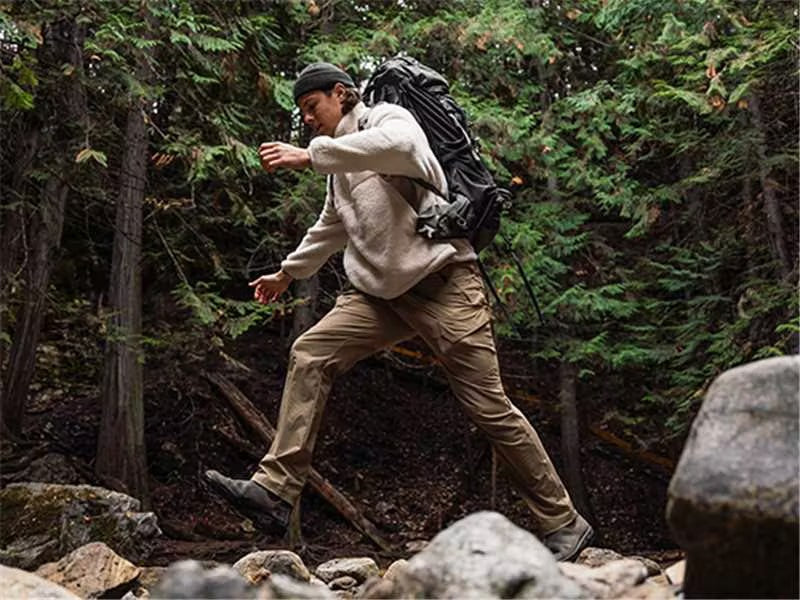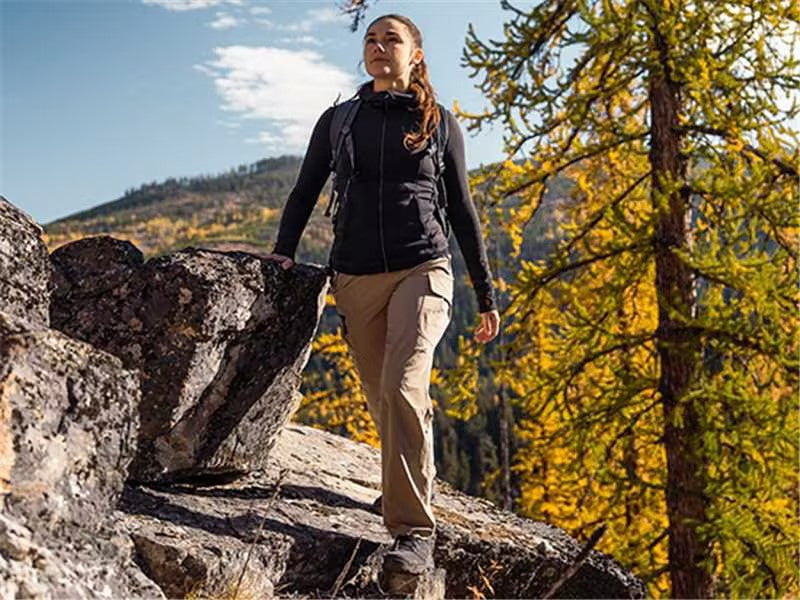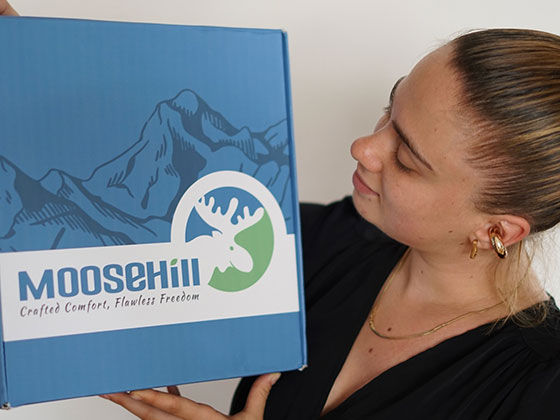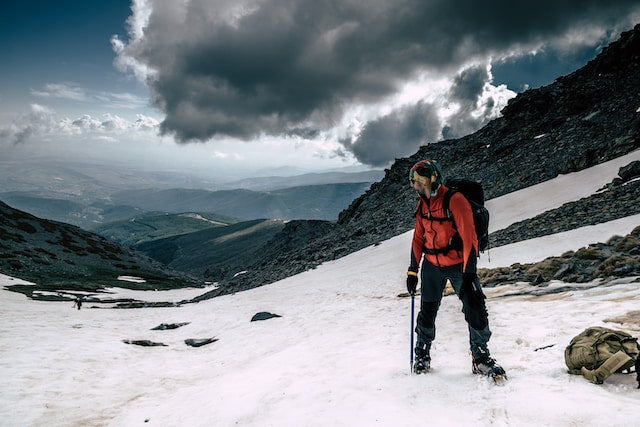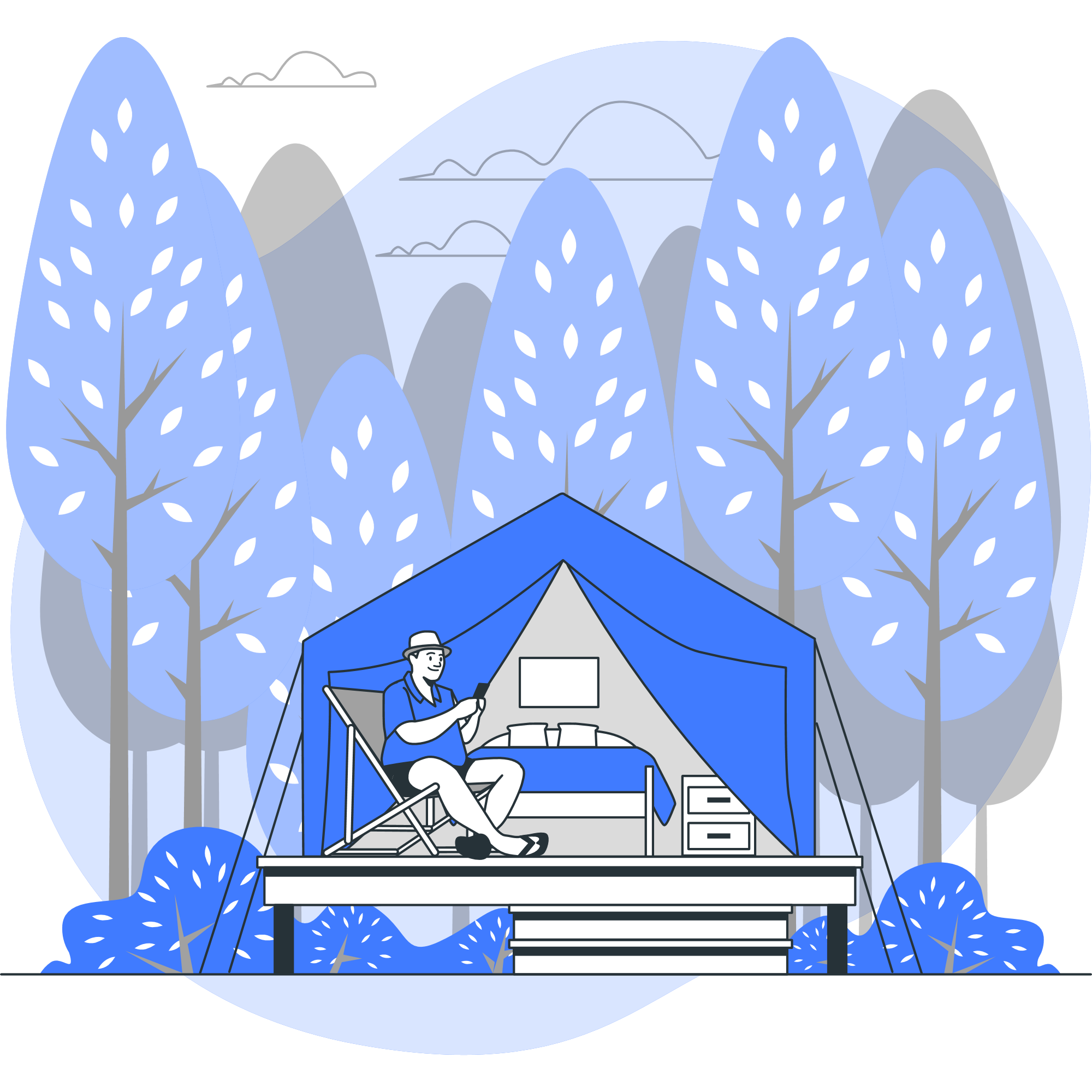When trekking in mountainous terrain, it is important to avoid getting lost, conserve energy, and maintain a good pace. The goal should be to follow established paths whenever possible and choose larger trails over smaller ones. In the absence of a designated path, it is advisable to traverse along the longitudinal ridges, mountain crests, slopes, riverbanks, and areas with tall trees, sparse vegetation, ample gaps, and low grass. It is generally not recommended to venture into deep ravines, dense thickets, or areas entangled with vines and bamboo. The preference should be given to ridges over valleys and vertical routes over horizontal ones. Walking in big strides is a principle that applies to trekking in mountainous terrain as well. By increasing your stride length and taking three steps in the space of two, you can cover long distances while taking fewer steps and conserving energy. As the saying goes, "It's not about being fast, but about not standing still." When feeling fatigued, it is advisable to switch to a relaxed and slower pace rather than coming to a complete stop. By walking slowly for just a minute, you can cover a considerable distance of several tens of meters.
When trekking in mountainous terrain, you often encounter various rock slopes and cliffs. Therefore, rock climbing is a crucial skill for mountaineering. Before attempting a rock climb, it is important to carefully observe the rocks, assess their quality and degree of weathering, and then determine the direction and route for climbing. The fundamental technique for rock climbing is the "three-point contact" method, which requires climbers to coordinate their hands and feet effectively. By securing two points with hands or feet and then moving the remaining point, the body's center of gravity gradually ascends. When using this method, it is important to avoid sudden upward movements and jerks, refrain from moving two points simultaneously, and maintain stability, lightness, and swiftness. Depending on the situation, choose the most suitable distance and the most secure foothold, avoiding taking large steps and reaching too far with your hands or feet.

Grass slopes and scree slopes are the most common types of terrain found in mountains. Below an altitude of 3000 meters, except for cliffs, most of the mountainous areas consist of grass slopes and scree slopes. When climbing slopes below 30 degrees, you can ascend in a straight line. Lean slightly forward, keep your entire foot in contact with the ground, bend your knees, and step with a moderate pace, avoiding overly large or fast steps. When the slope exceeds 30 degrees, climbing in a straight line becomes more challenging. The ankle joints have limited flexibility, leading to fatigue, and the steep slope increases the risk of loose scree, making it easier to slip. Therefore, the "Z" pattern ascent method is commonly used. This involves traversing in a zigzag pattern along the slope. During the climb, keep your legs slightly bent, lean forward, point the inner side of your toes forward, keep your entire foot in contact with the ground, and slightly angle the outer side of your toes outward. When crossing grass slopes, be cautious not to grab trees or pull on vines, as they may break and cause a fall. When traversing scree slopes, pay special attention to maintaining stable footing and lifting your feet gently to prevent the scree from rolling. If you accidentally slip while moving, immediately face the slope, spread your arms, extend your legs (with toes raised), and try to shift your body's center of gravity upward to reduce sliding speed. This way, you can search for handholds and supports while sliding. Avoid sitting facing outward, as it will not only increase sliding speed but also increase the risk of rolling on steeper slopes.
When trekking in mountainous areas during the rainy season, it is advisable to avoid low-lying areas such as valleys and streams to prevent flash floods and landslides. If you encounter a thunderstorm, immediately seek shelter in nearby low-lying areas or dense shrubbery, and avoid hiding under tall trees. Tall trees are often prone to lightning strikes, which can be dangerous. During a thunderstorm, temporarily store metal objects in an easily accessible location rather than carrying them with you. You can also seek out lower ground to lie down. In mountainous areas, if you encounter severe weather conditions such as snow, dense fog, or strong winds, it is best to stop trekking and take shelter under cliffs or in caves until the weather improves. When trekking in the mountains, do not overestimate your physical strength. Rest appropriately when you feel fatigued. It's not advisable to push yourself to the point of exhaustion before taking a break, as it is difficult to recover and continue with energy. The correct approach is to take a long stride for a distance, then relax and walk slowly for a while, or take a short break to adjust your breathing. When resting while standing, do not remove your gear or backpack. Instead, you can use a wooden stick to support the backpack, reducing the weight on your body. If the weather is cold, avoid sitting on rocks for rest, as rocks can quickly draw away body heat.
Climbing glaciers and snow slopes requires special caution. Glaciers have many crevasses, and the most dangerous areas for climbers are the icefall zones and the crevasses near the mountain's edge, especially hidden crevasses covered by snow. When crossing crevasses, it is important to travel in roped teams, with each person connected to the others with a rope, maintaining a distance of 10 to 12 meters between adjacent individuals. The person leading the group should constantly test the solidity of the ice ahead. Those following should step in the footprints of the person in front for safety. When crossing an ice bridge over a crevasse, it is best to crawl forward. When trekking on snow slopes, in addition to watching out for crevasses, it is important to avoid triggering snow avalanches. At the junction of ice and snow-covered slopes, the snow is often deep, so it is necessary to travel in roped teams. The person leading the group should test the solidity of the snow bridge before crossing, and then proceed cautiously. If the snow is loose and soft, and you must cross, crawling is recommended. When climbing steep snow slopes, it is important to establish a stable footing before moving. When taking a step forward, use the front part of both feet to step on the snow, creating steps before moving the back foot. If you accidentally slip, immediately lie down to prevent further sliding. When climbing glaciers and snow slopes, try to avoid areas with crevasses. When marching on snow, choose firmer areas to walk on. If you feel thirsty, do not quench your thirst with ice or snow. Suddenly consuming ice or snow can lead to inflammation of the throat. If you are extremely thirsty, you can rinse your mouth with melted snow, but try not to swallow it, as water increases the burden on the body's circulatory system, affecting your energy levels. When walking on soft snow for an extended period, take long strides to shorten the time spent walking on the snow. When walking, slightly retract your feet backward before taking a big step forward. This allows room for movement in the front of the snowshoes and helps brush off any accumulated snow when taking a step forward. When descending a steep slope, use the inner edge of the snowshoes to step on the slope and try to avoid leaning towards the outer edge. When the snow is extremely hard and frozen, it is best to remove the snowshoes and walk. When trekking in valleys, stay close to the centerline to avoid rolling stones from the slopes. Do not approach cornices, and never walk beneath them to avoid triggering avalanches. Cornices extend towards the leeward side of ridges or cliffs. The windward side has a gentler slope, making it easier for cornices to form, while slopes with around a 45-degree angle are less likely to develop cornices. Pay special attention to areas with varying wind directions and slopes on the sides of ridges. Snow avalanches are a significant disaster in high-altitude environments.
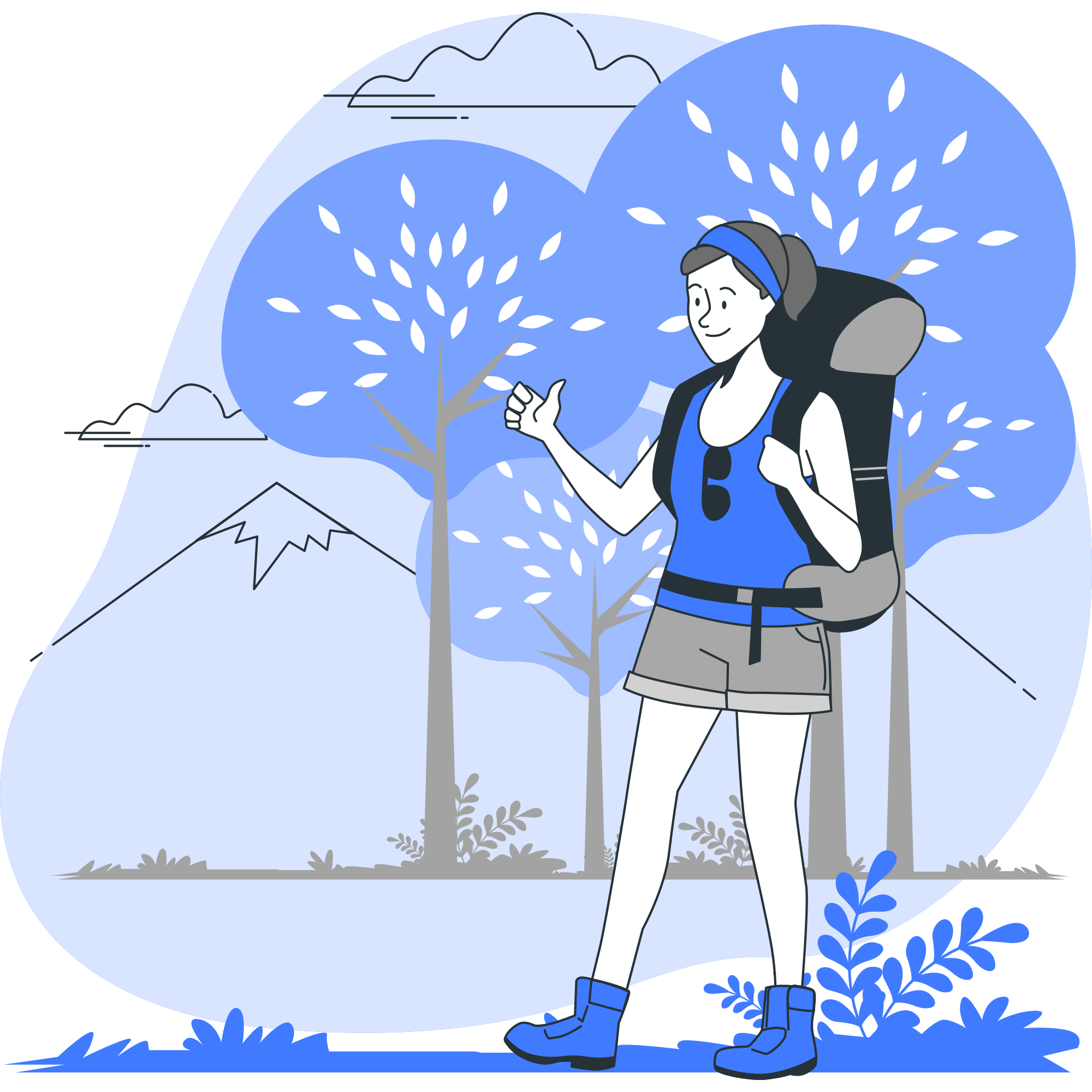
Avalanches are triggered by factors such as sound, vibrations, rock or snowfall, and the influence of wind. Avalanches typically occur on slopes where small snowballs roll, slopes with cracks in the snow, slopes with cornices, steep slopes of around 36 to 42 degrees without trees, long slopes, convex slopes, slopes facing south and southwest, and areas where new snow covers old snow or where the snow becomes loose due to rising temperatures. Generally, avalanches occur on the day following a clear day after new snowfall, typically between 9 and 10 in the morning. When passing through avalanche-prone areas, it is important to take precautions. Loosen straps in advance to be able to quickly free yourself from a large backpack or other equipment if necessary, ensuring freedom of movement. Remove any headgear that obstructs vision and hearing to detect avalanche signs as early as possible. Avoid traversing dangerous snow slopes laterally. Avoid activities that produce sound or vibrations, such as shooting. Avoid actions that may impact the snow surface, such as falling. If caught in an avalanche, vigorously perform a swimming motion repeatedly within the moving snow mass to try to stay on the surface. It becomes difficult to move once the avalanche stops, so it is crucial to try to stay on the surface while the avalanche is still in motion. Once buried in the snow, let saliva flow out of your mouth and observe its direction of flow to determine if you are inverted, then make efforts to self-rescue.

